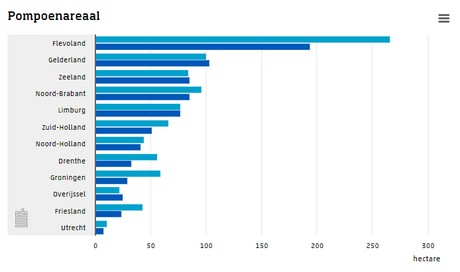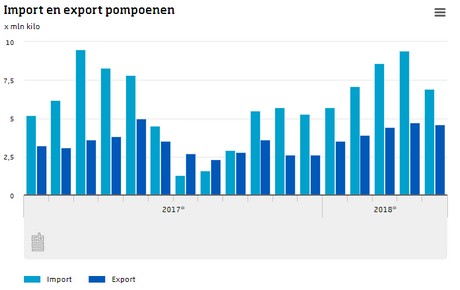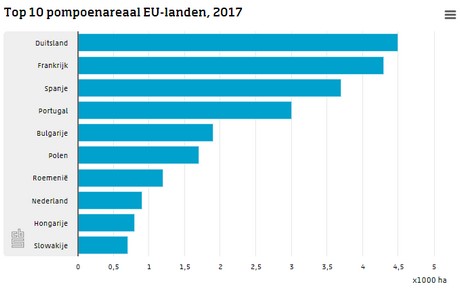
Trade increased
In the first five months of 2018, the Netherlands exported 21 million kilos of pumpkins, in that same period last year, this was 18.7 million kilos. The total pumpkin export in 2017 amounted to 38.2 million kilos. From January up to May 2018, the Netherlands imported 37.7 million kilos of pumpkins, a year earlier this was 37 million kilos. The total import in 2017 amounted to 67.7 million kilos.

The trade in pumpkins shows fluctuations.From June to September, fewer kilograms of pumpkins crossed the border. In October, the month of Halloween, import was nearly twice as large compared to a month earlier.
Fewest land per grower in Utrecht and North Brabant
The area used by pumpkin growers varies strongly per province. An average pumpkin grower in Flevoland has 4.6 hectares. Growers in Utrecht and North Brabant have the smallest areas; 1.1 and 1.2 hectares on average. The national average is 2.2 hectares.
Majority is organic
Sixty per cent of the pumpkin area was grown organically in 2018, this amounts to 468 hectares of pumpkins. In 2018, 119 companies produced organic pumpkins, that is 34 per cent of the total. Companies growing organic pumpkins have a larger area on average (3.9 hectares) than companies growing conventional pumpkins (1.2 hectares).
The Netherlands is average in the EU
Compared to other European countries, the Dutch pumpkin area came seventh in 2017. With 4,500 hectares, Germany has the largest pumpkin area. France and Spain come next.








